New Ireland Province, Papua New Guinea – 8 September 2025 — Four coastal communities in New Ireland Province have launched their own management plans to protect and restore seagrass beds and mangrove forests that sustain their shores, culture, and livelihoods.
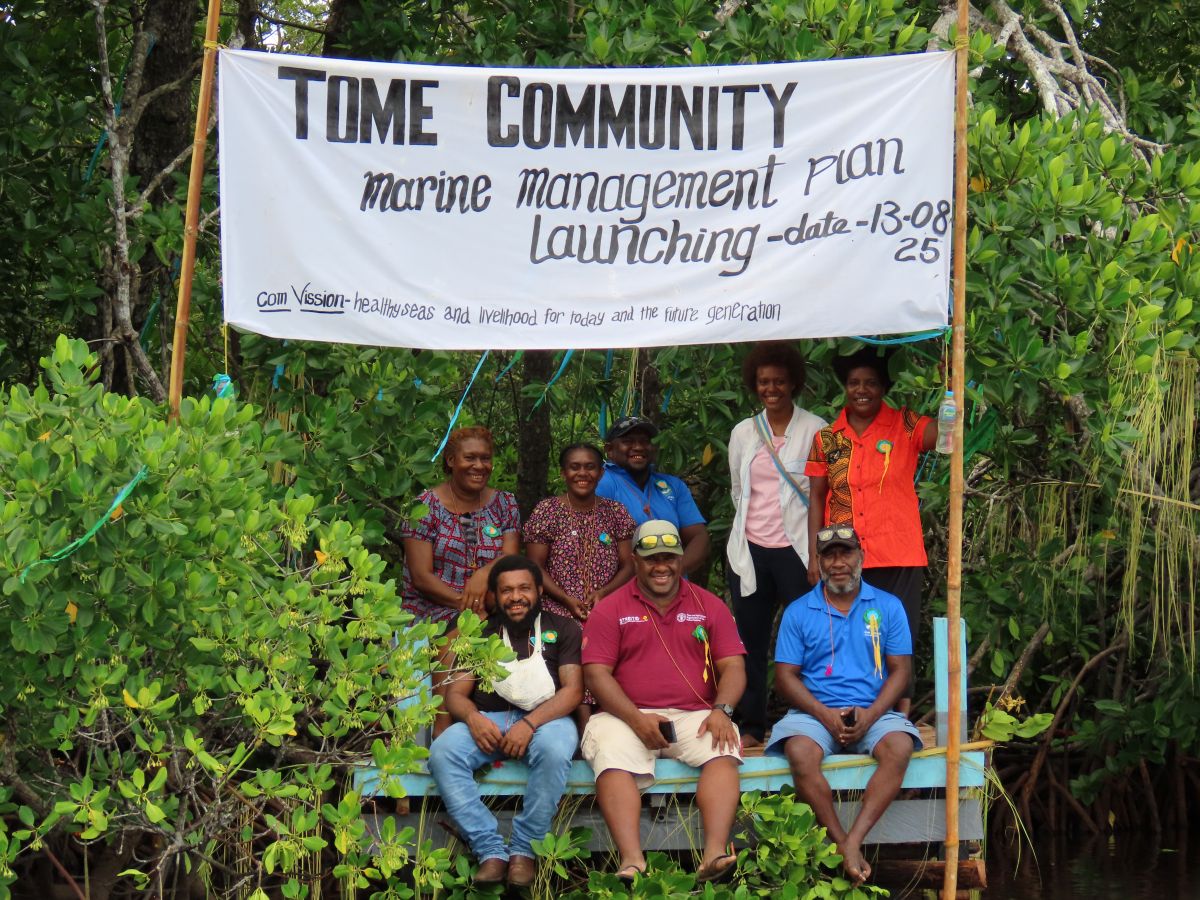
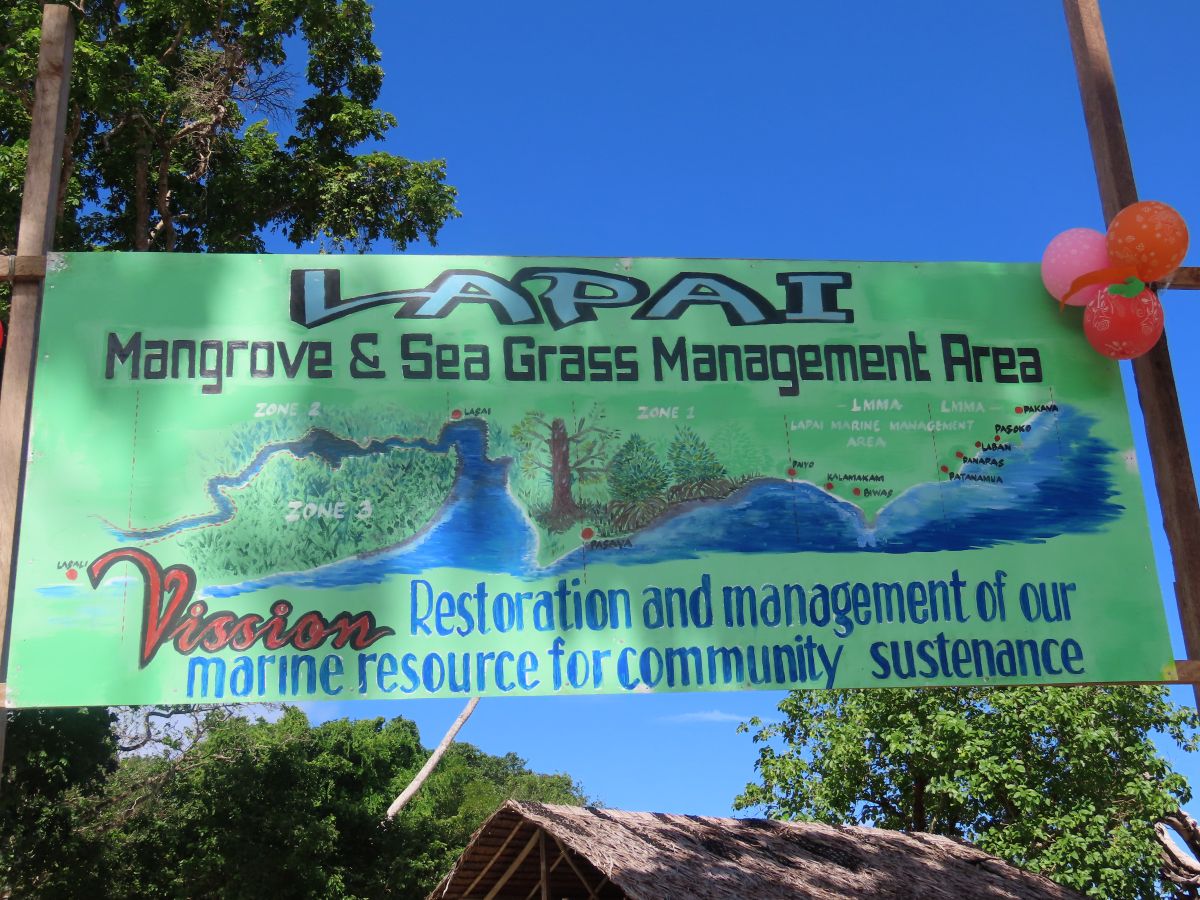

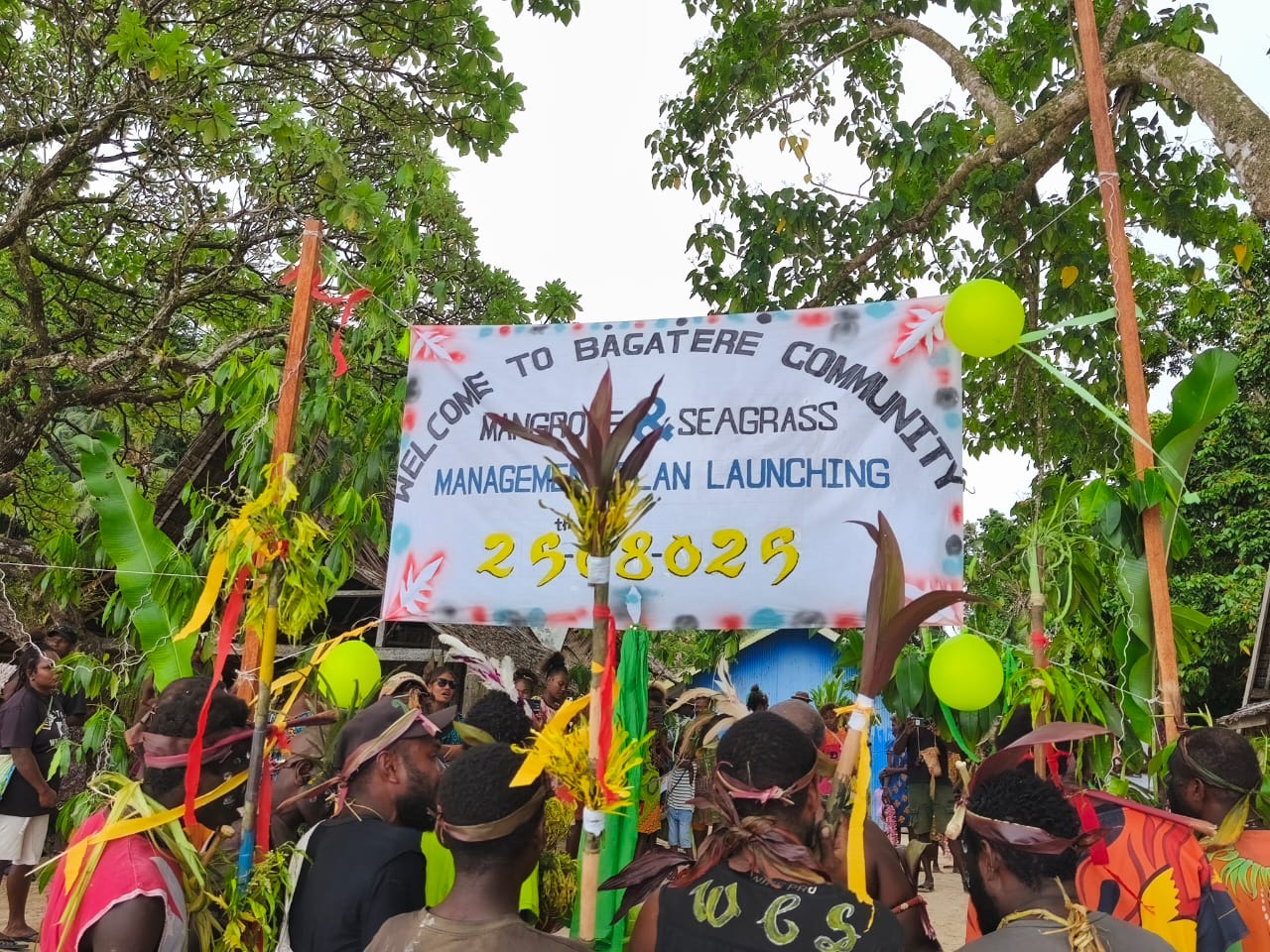
The communities are Lapai, Tome, and Bagatare villages in Tikana Local Level Government (LLG), and Sivasat in Kavieng Urban LLG. Supported by the Secretariat of the Pacific Regional Environment Programme (SPREP) through the Management of Blue Carbon Ecosystems in Pacific Island Countries (MACBLUE) project, and facilitated by the Wildlife Conservation Society Papua New Guinea (WCS PNG), the initiative started in February 2025 and culminated in the development and launching of four site-specific community-based seagrass and mangrove management plans.
Locally appointed Seagrass and Mangrove Management Committees in each village will now guide the management, sustainable use, and rehabilitation of these important “blue carbon” habitats, which shield coastlines from erosion, store vast amounts of carbon from the air, and provide nurseries for fish and other marine life. The mangrove management plans were endorsed through traditional ceremonies amongst the four communities.
Annisah Sapul, the WCS Kavieng Program Manager, explained that communities are more likely to take an active role in resource management when they recognise the direct benefits, particularly in terms of food security and income.

WCS Kavieng Programme Manager, Annisah Sapul addressing the community during the Lapai launch on Tuesday 12, August 2025.
“We are connecting the [people] back to what their ancestors used to do in terms of management. We rely a lot on our environment for our health [and] food, and therefore it’s a very important part of our way of living,” shared Sapul.
She continued, stating that the ceremony signified the recognition by communities of their active roles and responsibilities in natural resource management, and the adoption of the management plans stands as a testament to their commitment to working collaboratively as community in implementing their management plans.
“Local people are the stewards of these ecosystems. Our role is to listen, support, and equip them with the technical support to turn their vision into action. When communities lead the charge, conservation is not only more effective, but it also becomes part of daily life.”
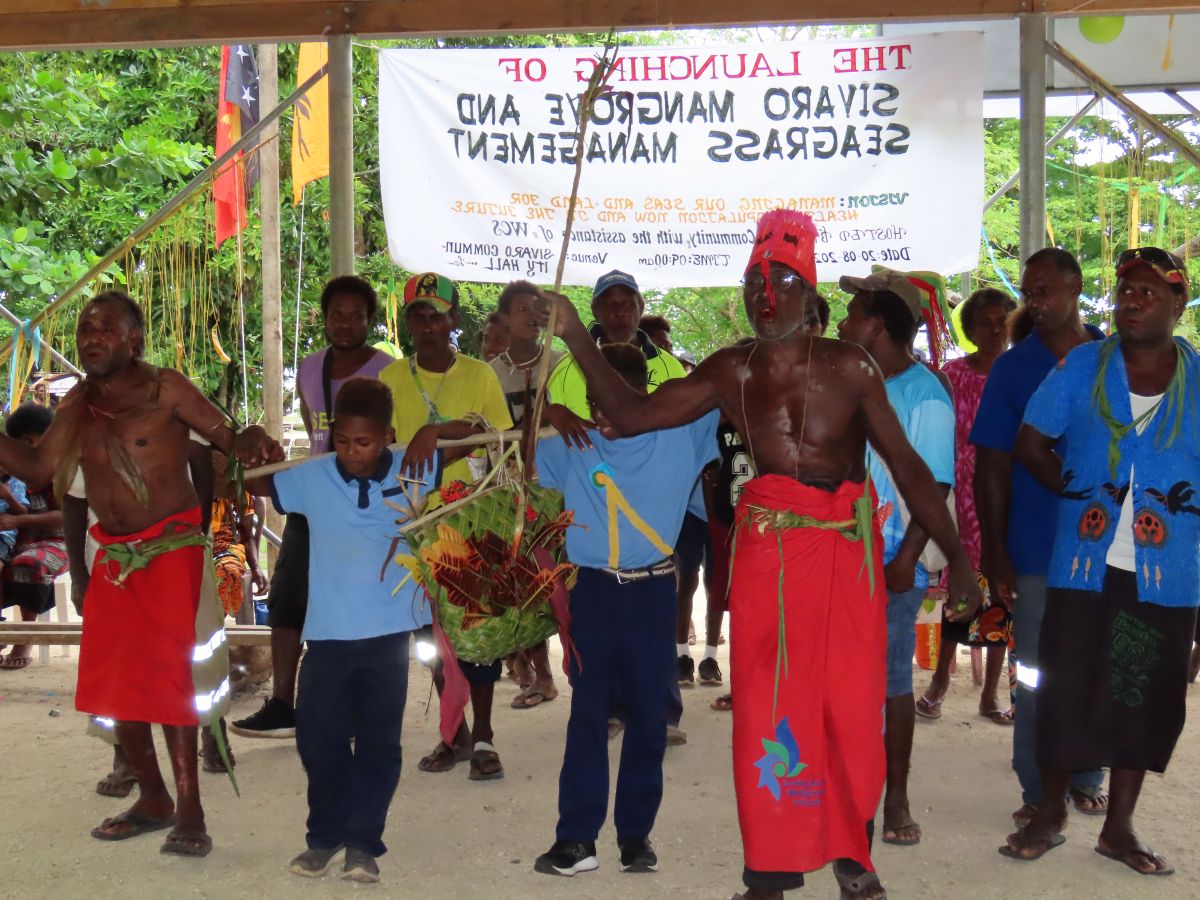
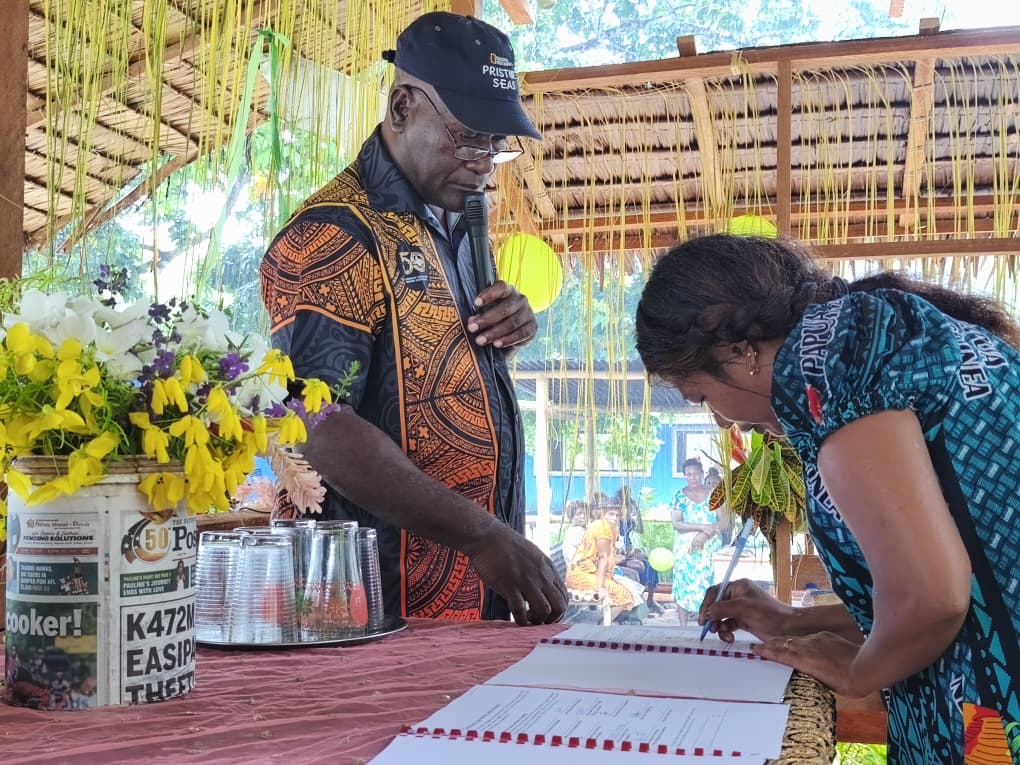
Pic 1 left: Maimais (Chiefs - in red laplaps) of Sivasat community escorting the management plans that were brought to the community hall by students .
Pic 2 right: Women representative from Bagatere signing the management plan as WCS PNG's Senior Community Engagement officer, July Kuri looks on.
Papua New Guinea ranks as the country with the world's fourth-largest mangrove areas with at least 43 different species of mangrove flora, while also supporting the largest diversity of seagrass species in the Pacific. New Ireland Province is home to an estimated population of 232,000 people.

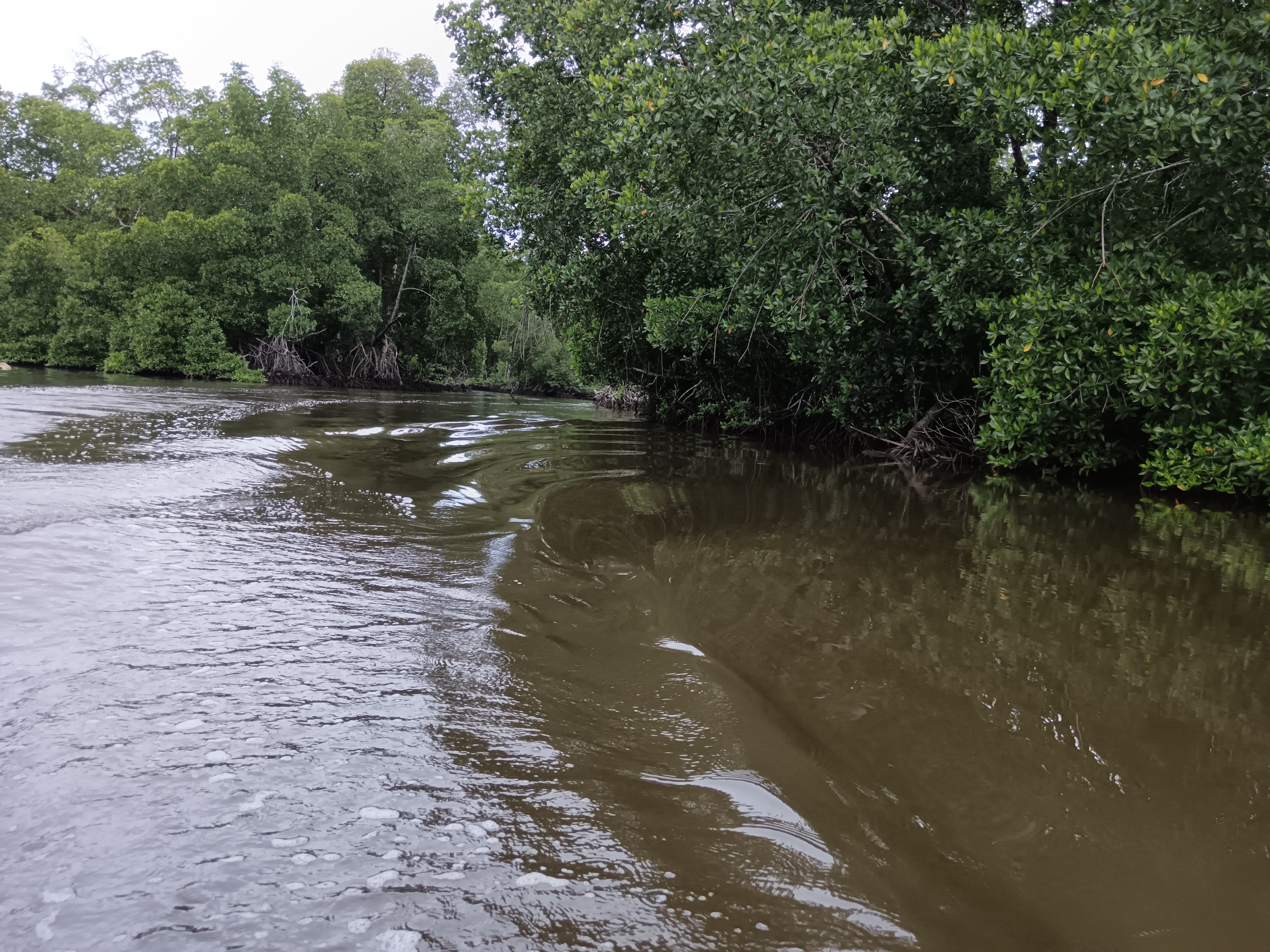
Pic 1. Mangrove management area in Lapai Pic 2. Mangrove forest management area at Tome
The development of the community-based management plans is part of the regional MACBLUE project, implemented by SPREP and funded by the German Federal Ministry for the Environment, Nature Conservation, Nuclear Safety and Consumer Protection.
SPREP-MACBLUE Coordinator, Turang Teuea, shared that the people-centred approach applied during the development of the management plans centralises on community participation and local knowledge with the aim of empowering the communities to better manage and protect their seagrass and mangrove ecosystems.
“It’s about enunciating their ownership of the process. When communities are part of the planning, decision-making, and implementation, they feel a stronger sense of responsibility and pride.”
By committing to protect and restore their mangrove forests and seagrass meadows, the four communities are safeguarding biodiversity, helping to ensure local food security, and strengthening coastal resilience for themselves and for the future generations.
###
The Wildlife Conservation Society Papua New Guinea (WCS PNG) is dedicated to empowering local communities through ground-up, community-led environmental management and conservation initiatives. Our mission is to enable the sustainable management of customary lands, seas, and other natural resources, with focus on the high-integrity forest landscapes of the PNG Highlands and the seascapes of the Bismarck Sea, a key focal point of the Coral Triangle ecoregion. Since the late-1970s, WCS PNG has been a national leader in community-based environmental management and conservation. We currently operate directly or in partnership with other environmental organisations and government bodies across 11 of the 22 provinces in Papua New Guinea. Our mission is: empowered people with healthy forests and seas (Gutpela bus, gutpela solwara, gutpela). Visit our website www.wcspng.org for more information.
The Management and Conservation of Blue Carbon Ecosystems (MACBLUE) project focuses on developing and strengthening institutional and individual capacities on a long-term basis to strengthen the sustainable management and conservation of mangrove and seagrass ecosystems. It works along five outputs. Overall, MACBLUE is supporting Fiji, Papua New-Guinea, the Solomon Islands and Vanuatu to meet their priorities in biodiversity conservation and climate protection. The project is funded by the German Federal Ministry for Environment, Nature Conservation, Nuclear Safety and Consumer Protection (BMUV) through its International Climate Initiative (IKI).